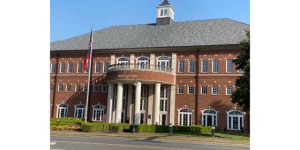Werner Braun: Johnston statue downtown a Tiffany monument
Published 9:02 am Friday, September 28, 2012
One of the fun things about having moved the Carpet and Rug Institute (CRI) office downtown is there’s never a dull moment.
Trending
From my window in the old U.S. post office, which was most recently home to administrators of the Dalton Public Schools system, I have a bird’s eye view to the excitement surrounding the restoration of a monument that could be considered a “treasure hidden in plain view.”
Most of you have probably seen the Gen. Joseph E. Johnston monument that sits on the corner of Hamilton and Crawford streets, and you may know something about that Virginia-born officer who once commanded the Army of Tennessee during the Civil War.
Gen. Johnston was one of the senior most officers for the Confederacy, and he was selected by president of the Confederacy Jefferson Davis to command the Army of Tennessee in the winter of 1863, just before Sherman’s Atlanta Campaign. Troops were positioned in Dalton under Johnston’s leadership during the winter of 1863-64.
Decades later, the statue that bears his name was commissioned by the Pvt. Drewry R. Smith Chapter of the United Daughters of the Confederacy. On Oct. 24, 1912, the 16-foot sculpture and the base monument were dedicated. The sculpture was designed by Belle Kinney, one of the very few women sculptors practicing during that era.
That in itself makes the statue unique, but what many of you may not know is that during the recent restoration of the monument, conservators from Ponsford Ltd., of Atlanta, made a fascinating discovery.
The statue was cast at Tiffany Studio in New York, which makes it as rare as it is valuable.
Trending
“At the time we first viewed it, we knew who the sculptor was, but the trees around it covered up the name of the foundry,” recalls Gordon Ponsford, president and senior conservator for Ponsford.
“Once the trees were removed, one of Ponsford’s preservation techs, Rex Lisle, discovered the Tiffany Studio mark and realized that this sculpture was cast at Tiffany Studios in New York. This is ‘not’ what you would have expected to find in North Georgia.”
The Ponsford Ltd. Group was hired by the Pvt. Drewry R. Smith Chapter of the UDC to restore the monument in honor of its 100th anniversary, but the sculpture, mounted on a monument on city property, is owned and maintained by Georgia State United Daughters of the Confederacy.
While the restoration experts noticed immediately that the Gen. Johnston likeness was a very high-quality piece, Ponsford said the Tiffany mark explained why the ravages of time and weather during the past century had not had much effect on the sculpture.
“The quality of the bronze that was used was very high,” he noted. “Even though it had some corrosion on it, it wasn’t bad at all and less than what I would have expected for a 100-year-old structure.
Having a bronze monument in the South during that time period was a bit unusual in itself, Ponsford said, because the South was in a severe economic time and most of the bronze sculptures were produced for the more prosperous North, and at least 75 percent of Confederate sculptures were carved from stone.
“While it might not be as rare for a Confederate sculpture to be made of bronze, it is extremely rare for a Confederate monument to be made by Tiffany studios,” he added.
The same sculptor, Belle Kinney, also designed a work that is displayed in Chattanooga, near the courthouse, which is not quite as old as the Gen. Johnston monument.
Ponsford said that both sculptures designed by Belle were cast at the Tiffany foundry, making this one and the one in Chattanooga rare pieces of the highest quality.
But the uniqueness of this work lies also in the artist who created it, he says.
“Carving stone back then was not an easy process, and not many women did that kind of work. And most of Belle’s work was actually done in Tiffany studios, the highest priced foundry at the time, which seems rare in and of itself.”
It was indeed a rare treat for me to watch this piece of art get a facelift, so to speak. It’s yet another example of jewels in our midst. I hope you’ll come by to admire the newly restored sculpture, and give your thanks to the members of the United Daughters of the Confederacy for making this rejuvenation possible.
Werner Braun is president of the Dalton-based Carpet and Rug Institute.






